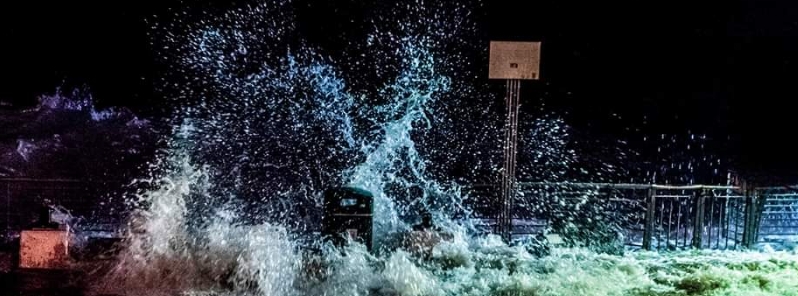Sea of Galilee expected to fill up for the first time since 1992, Israel

The Sea of Galilee or Kineret– Israel's largest freshwater lake– has increased by 6 cm (2.3 inches) following heavy rains from April 9 to 11, 2020. According to the Israel Water Authority, the level reached 209 m (686 feet) below sea level as of Sunday, April 12, 2020, and with the water level just 21 cm (8.3 inches) below the upper red line or maximum capacity, the lake is expected to fill up for the first time since 1992.
- All parts of Israel have already seen more than their average yearly rainfall for the season.
- The dramatic increase in water level came after years of drought which led to dangerously low water levels.
The downpours over the weekend were not limited to northern Israel as Jerusalem and huge swaths of the coastal plain received up to 30 mm (1.2 inches) of rain.
Plentiful rains since early January this year have also resulted in the increase of the water level by 3.12 m (10.23 feet). The waters are expected to keep rising over the following weeks as the snow melts on the peaks in the Gola Heights and flows steadily into the lake.
The week-long Passover is another factor since during the holiday, water is not pumped from the lake out of fear that it could contain leaven, which is prohibited by Jewish law.
If there is one piece of good news in these troubled times, this is it: the Kinneret, the Sea of Galilee, is completely overflowing with water. This has not happened in 30 years!
An overflowing Sea of Galilee means happy Israelis, #coronavirus or not. pic.twitter.com/g8HznuIDEj
— Ofir Gendelman (@ofirgendelman) April 12, 2020
#ICYMI – WATCH: Some incredible news! For the first time in almost 30 years, the Kinneret (Sea of Galilee) in northern #Israel is overflowing. pic.twitter.com/2NKue22R7Z
— StandWithUs (@StandWithUs) April 13, 2020
"Kinneret will continue to rise in the coming days and already by the beginning of May the level is expected to stabilize for the first time since February 1992 at the top of the red line, which means a full Kinneret," said Dr. Amir Givati, director of flood modeling at ClimaCell.
The water authority estimated in March that the Degania dam at the southern end of Kinneret will not be opened this year, unless "exceptional" rainfall occurs.
With further rain forecast for the next days, the water authority may eventually have to open the dam at the southern end of the lake which leads into the River Jordan to prevent flooding.
All parts of Israel have already seen more than their average yearly rainfall for the season, with Jerusalem at 120 percent, Tel Aviv at 110 percent, Haifa at 135 percent, Beersheva at 130 percent, and Kinneret at 125 percent.
The dramatic increase in water level came after years of drought which led to dangerously low water levels.

Featured image credit: @adirshagal/Twitter

Commenting rules and guidelines
We value the thoughts and opinions of our readers and welcome healthy discussions on our website. In order to maintain a respectful and positive community, we ask that all commenters follow these rules:
We reserve the right to remove any comments that violate these rules. By commenting on our website, you agree to abide by these guidelines. Thank you for helping to create a positive and welcoming environment for all.